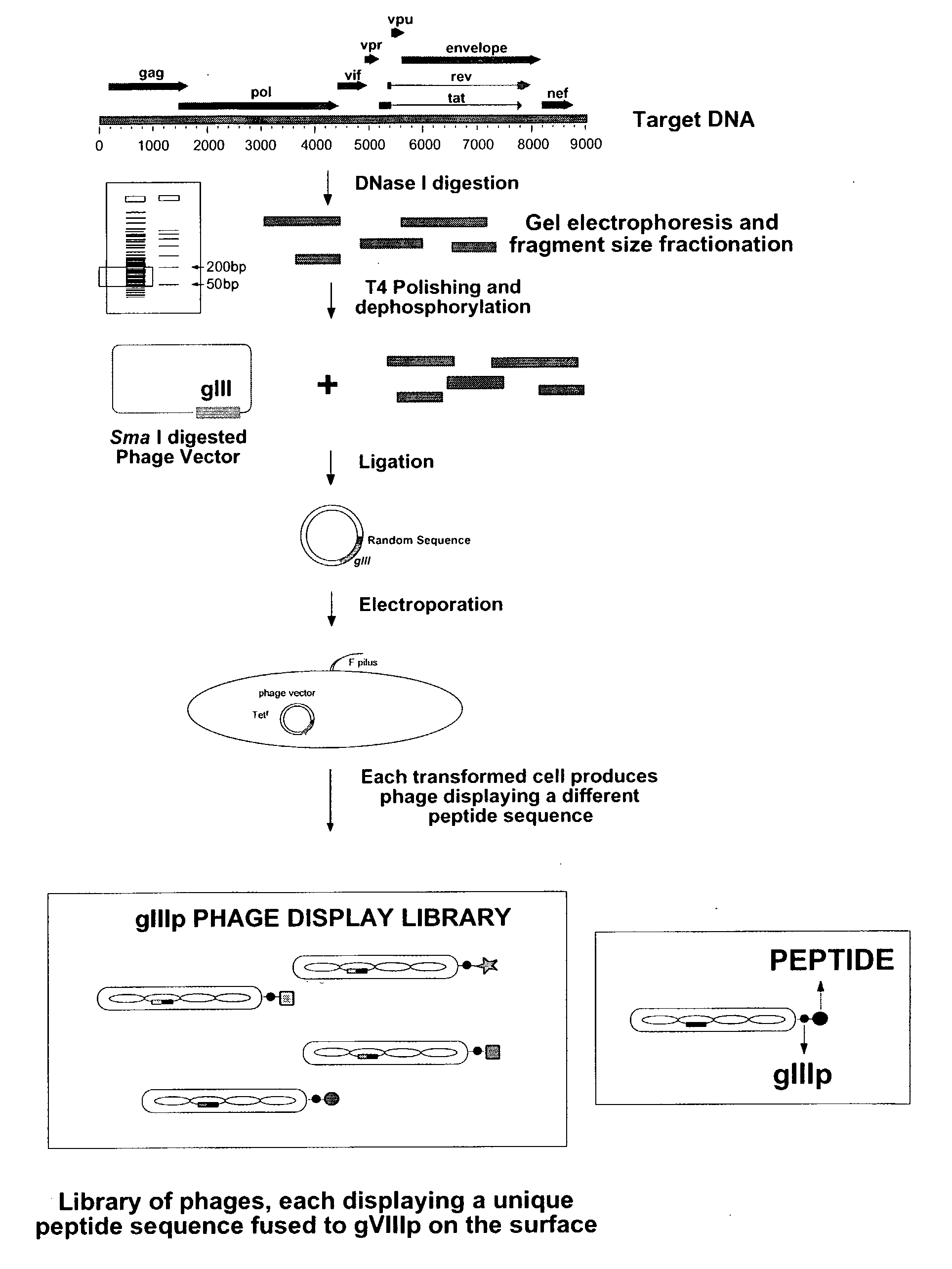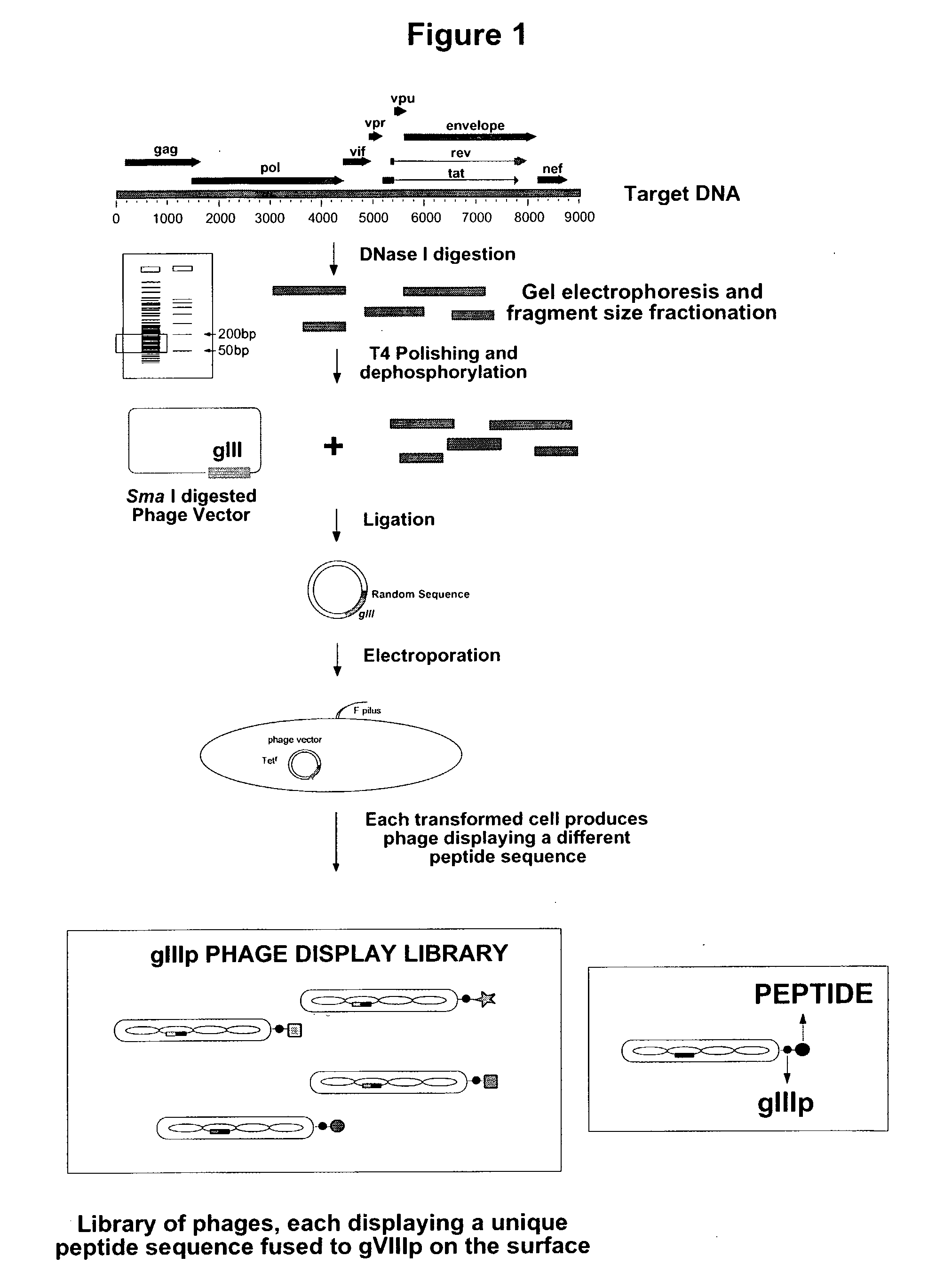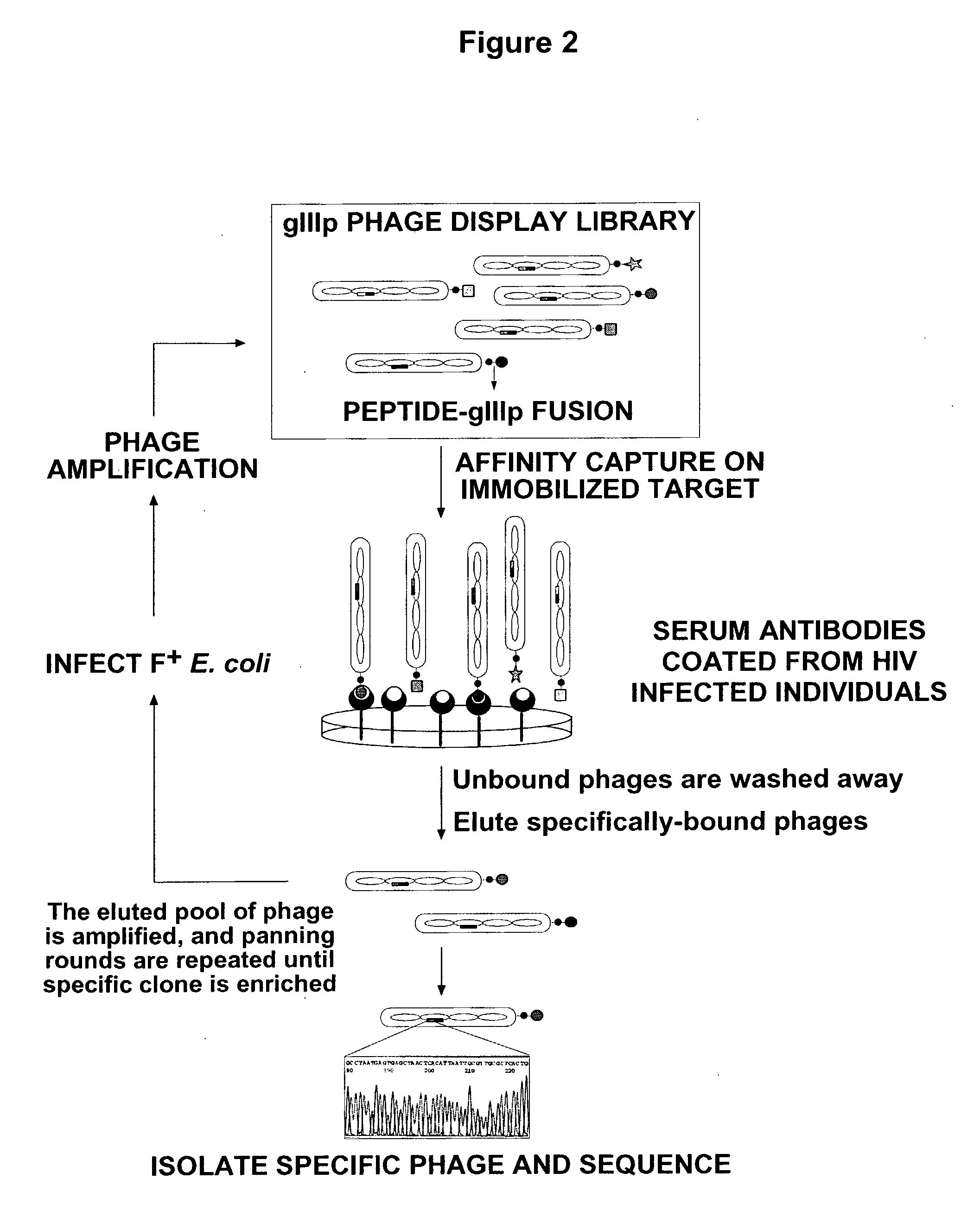Compositions and methods for the detection of hiv-1/hiv-2 infection
a technology of immunodeficiency virus and compositions, applied in the field of compositions and methods for the detection of immunodeficiency virus infection, can solve the problems affecting the clinical trial of prophylactic hiv vaccines, and affecting the clinical trial of hiv vaccines. , to achieve the effect of contributing to other social harms and reducing the negative impa
- Summary
- Abstract
- Description
- Claims
- Application Information
AI Technical Summary
Benefits of technology
Problems solved by technology
Method used
Image
Examples
example 1
Identification of New Serologic Epitopes
[0100]In order to identify new serologic epitopes that conform to the above discussed criteria, gene-fragment phage display libraries are constructed by limited DNase I digestion of HIV-1 DNA (NL4-3 clone) to generate random DNA fragments, 50-300 bp long. The fragments are purified and polished with T4 DNA polymerase and cloned at the N-termini of the coat protein of phage display vectors (FIG. 1). This procedure results in the formation of a phage library that contains every possible encoded peptide in any of the reading frames.
[0101]The library is subjected to panning on immobilized serum antibodies from HIV-1-infected individual (early seroconversion). Phages that bind to the immobilized antibodies are retained, while non-binding, or weakly binding, phages are washed-off (FIG. 2).
[0102]DNA sequencing of the captured phages (after amplification in and individual separation in E. coli) allows the mapping of the selected peptides to known HIV ...
example 2
Production and Use of New Serologic Epitopes
[0105]Large quantities of highly purified synthetic peptides expressing the identified sequences from HIV-1 GAG-p6, gp41, and Nef, or HIV-2 Gag-p6 and gp36, are produced under GLP conditions. The synthetic peptides are used to coat ELISA plates.
[0106]The reactivities of the synthetic peptides are tested with early seroconversion samples from different countries and different clades (under standardized conditions). Pre-clinical and clinical samples of immune sera from recent HIV vaccine candidates, likely to proceed to phase I / II / III trials, are screened in order to confirm and expand the above-described demonstration of the ability of the newly discovered HIV-1 epitopes, either alone or in combination, to react with high percentage of plasma from early seroconversion-patients. Currently licensed EIA kits may be used for side-by-side analysis.
[0107]The reactivity of immune sera from recipients of complex HIV vaccine candidates (as well as f...
example 3
HIV ELISA
[0110]In order to determine preferred conditions for conducting an ELISA using the peptides of the present invention, various combinations of peptides, coating amounts, blocking agents, serum / plasma dilutions, second antibodies, second antibody dilutions and substrates are tested (a few are summarized in Table 11). ELISAs are characterized for the following sample types: normal (non-HIV infected) serum samples (for cut-off determination); confirmed HIV infected serum samples; seroconversion samples, serum samples from patients infected with different HIV-1 subtypes, randomly collected serum samples-blinded panel, vaccinated individual serum samples. ELISAs are also characterized for cross-reactivity with other pathogens including retroviruses.
[0111]From such characterizations preferred assay conditions are found to employ a peptide for epitope presentation, a coating of 33 ng (for GAG-p6) or 250 ng (for ENV-gp-41), blocking by 2% milk, a 1:100 serum / plasma dilution, a HRP-A...
PUM
| Property | Measurement | Unit |
|---|---|---|
| optical density | aaaaa | aaaaa |
| optical density | aaaaa | aaaaa |
| optical density | aaaaa | aaaaa |
Abstract
Description
Claims
Application Information
 Login to View More
Login to View More - R&D
- Intellectual Property
- Life Sciences
- Materials
- Tech Scout
- Unparalleled Data Quality
- Higher Quality Content
- 60% Fewer Hallucinations
Browse by: Latest US Patents, China's latest patents, Technical Efficacy Thesaurus, Application Domain, Technology Topic, Popular Technical Reports.
© 2025 PatSnap. All rights reserved.Legal|Privacy policy|Modern Slavery Act Transparency Statement|Sitemap|About US| Contact US: help@patsnap.com



